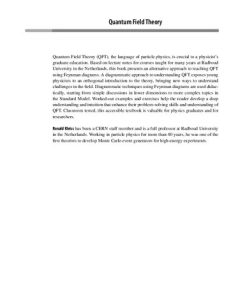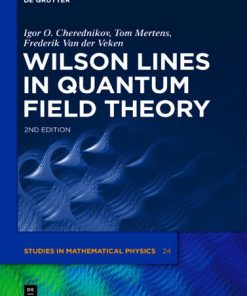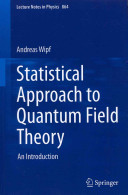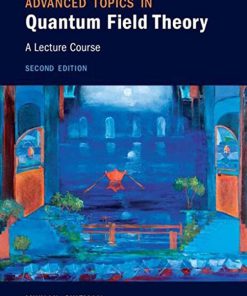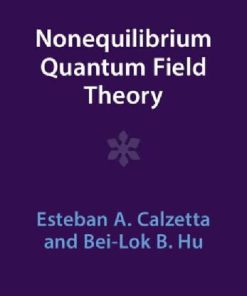Quantum Field Theory 2nd Edition by Michael Sadovskii 3110645157 9783110645156
$50.00 Original price was: $50.00.$25.00Current price is: $25.00.
Quantum Field Theory 2nd Edition by Michael Sadovskii- Ebook PDF Instant Download/Delivery: 3110645157, 9783110645156
Full download Quantum Field Theory 2nd Edition after payment
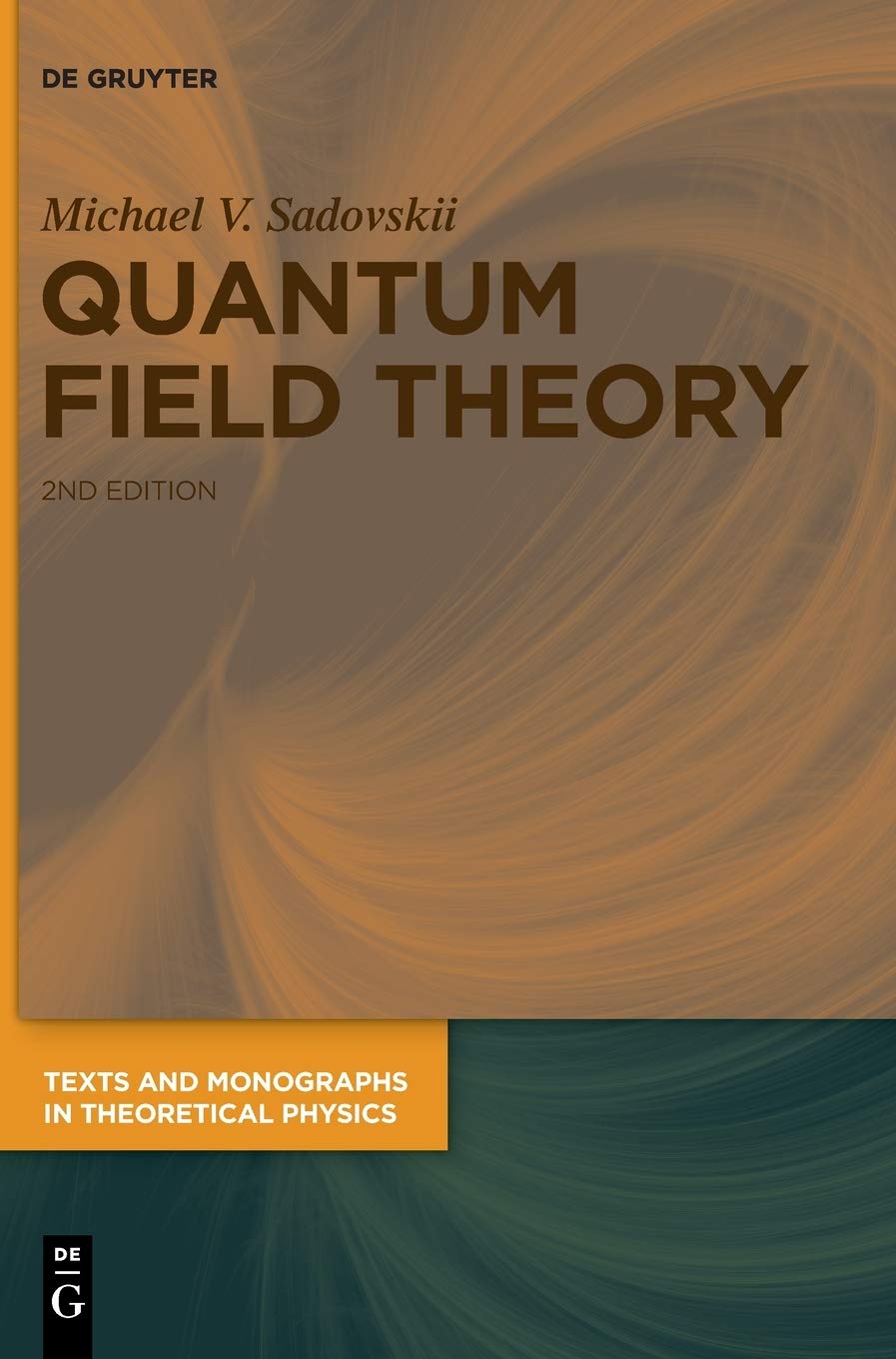
Product details:
ISBN 10: 3110645157
ISBN 13: 9783110645156
Author: Michael V. Sadovskii
This book discusses the main concepts of the Standard Model of elementary particles in a compact and straightforward way. The theoretical results are derived using the physical phenomena as a starting point. This inductive approach allows a deep understanding of the methods used for solving problems in this field. This second, revised edition is expanded with biographical notes contextualizing the main results in quantum field theory.
Quantum Field Theory 2nd Table of contents:
1 Basics of elementary particles
1.1 Fundamental particles
1.1.1 Fermions
1.1.2 Vector bosons
1.2 Fundamental interactions
1.3 The Standard Model and perspectives
2 Lagrange formalism. Symmetries and gauge fields
2.1 Lagrange mechanics of a particle
2.2 Real scalar field. Lagrange equations
2.3 The Noether theorem
2.4 Complex scalar and electromagnetic fields
2.5 Yang–Mills fields
2.6 The geometry of gauge fields
2.7 A realistic example: chromodynamics
3 Canonical quantization, symmetries in quantum field theory
3.1 Photons
3.1.1 Quantization of the electromagnetic field
3.1.2 Remarks on gauge invariance and Bose statistics
3.1.3 Vacuum fluctuations and Casimir effect
3.2 Bosons
3.2.1 Scalar particles
3.2.2 Truly neutral particles
3.2.3 CPT-transformations
3.2.4 Vector bosons
3.3 Fermions
3.3.1 Three-dimensional spinors
3.3.2 Spinors of the Lorentz group
3.3.3 The Dirac equation
3.3.4 The algebra of Dirac’s matrices
3.3.5 Plane waves
3.3.6 Spin and statistics
3.3.7 C, P, T transformations for fermions
3.3.8 Bilinear forms
3.3.9 The neutrino
4 The Feynman theory of positron and elementary quantum electrodynamics
4.1 Nonrelativistic theory. Green’s functions
4.2 Relativistic theory
4.3 Momentum representation
4.4 The electron in an external electromagnetic field
4.5 The two-particle problem
5 Scattering matrix
5.1 Scattering amplitude
5.2 Kinematic invariants
5.3 Unitarity
6 Invariant perturbation theory
6.1 Schroedinger and Heisenberg representations
6.2 Interaction representation
6.3 S-matrix expansion
6.4 Feynman diagrams for electron scattering in quantum electrodynamics
6.5 Feynman diagrams for photon scattering
6.6 Electron propagator
6.7 The photon propagator
6.8 The Wick theorem and general diagram rules
7 Exact propagators and vertices
7.1 Field operators in the Heisenberg representation and interaction representation
7.2 The exact propagator of photons
7.3 The exact propagator of electrons
7.4 Vertex parts
7.5 Dyson equations
7.6 Ward identity
8 Some applications of quantum electrodynamics
8.1 Electron scattering by static charge: higher-order corrections
8.2 The Lamb shift and the anomalous magnetic moment
8.3 Renormalization – how it works
8.4 “Running” the coupling constant
8.5 Annihilation of e+e− into hadrons. Proof of the existence of quarks
8.6 The physical conditions for renormalization
8.7 The classification and elimination of divergences
8.8 The asymptotic behavior of a photon propagator at large momenta
8.9 Relation between the “bare” and “true” charges
8.10 The renormalization group in QED
8.11 The asymptotic nature of a perturbation series
9 Path integrals and quantum mechanics
9.1 Quantum mechanics and path integrals
9.2 Perturbation theory
9.3 Functional derivatives
9.4 Some properties of functional integrals
10 Functional integrals: scalars and spinors
10.1 The generating functional for scalar fields
10.2 Functional integration
10.3 Free-particle Green’s functions
10.4 The Generating functional for interacting fields
10.5 φ4 theory
10.6 The generating functional for connected diagrams
10.7 Self-energy and vertex functions
10.8 The theory of critical phenomena
10.9 Functional methods for fermions
10.10 Propagators and gauge conditions in QED
11 Functional integrals: gauge fields
11.1 Non-Abelian gauge fields and Faddeev–Popov quantization
11.2 Feynman diagrams for non-Abelian theory
12 The Weinberg–Salam model
12.1 Spontaneous symmetry-breaking and the Goldstone theorem
12.2 Gauge fields and the Higgs phenomenon
12.3 Yang–Mills fields and spontaneous symmetry-breaking
12.4 The Weinberg–Salam model
13 Renormalization
13.1 Divergences in φ4
13.2 Dimensional regularization of φ4 -theory
13.3 Renormalization of φ4 -theory
13.4 The renormalization group
13.5 Asymptotic freedom of the Yang–Mills theory
13.6 “Running” coupling constants and the “grand unification”
14 Nonperturbative approaches
14.1 The lattice field theory
14.2 Effective potential and loop expansion
14.3 Instantons in quantum mechanics
14.4 Instantons and the unstable vacuum in field theory
14.5 The Lipatov asymptotics of a perturbation series
14.6 The end of the “zero-charge” story?
People also search for Quantum Field Theory 2nd:
5 quantum numbers
4 quantum numbers
quantum field theory and critical phenomena pdf
3rd quantum number
Tags:
Michael Sadovskii,Quantum,Field,Theory
You may also like…
Physics
Statistical Approach to Quantum Field Theory 2nd Edition by Andreas 9783030832636 3030832635
Physics - Quantum Physics
Wilson Lines in Quantum Field Theory 2nd Edition Igor Olegovich Cherednikov
Physics - Theoretical Physics
Advanced Topics in Quantum Field Theory 2nd Edition by Mikhail Shifman ISBN 9781108840422 1108840426
Physics - Quantum Physics
Relativistic Quantum Field Theory 1st Edition by Michael Strickland ISBN 9780750330213 075033021X



